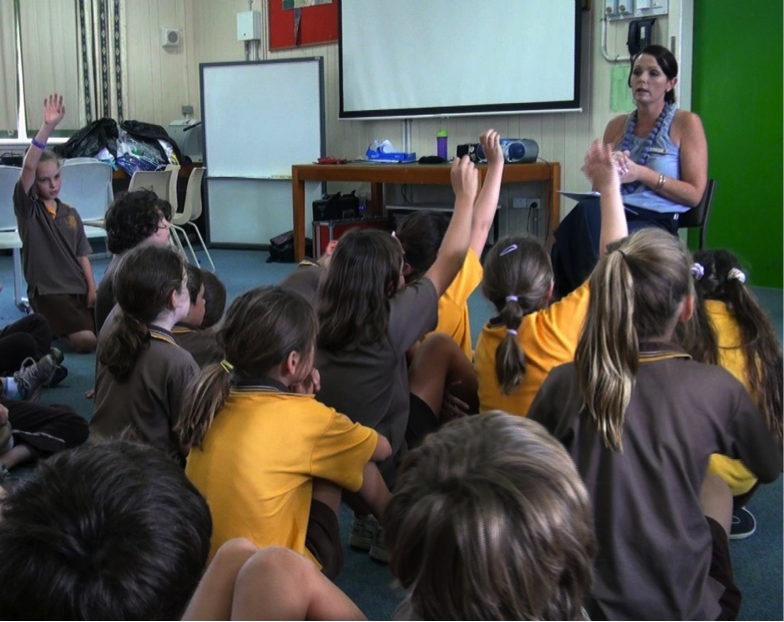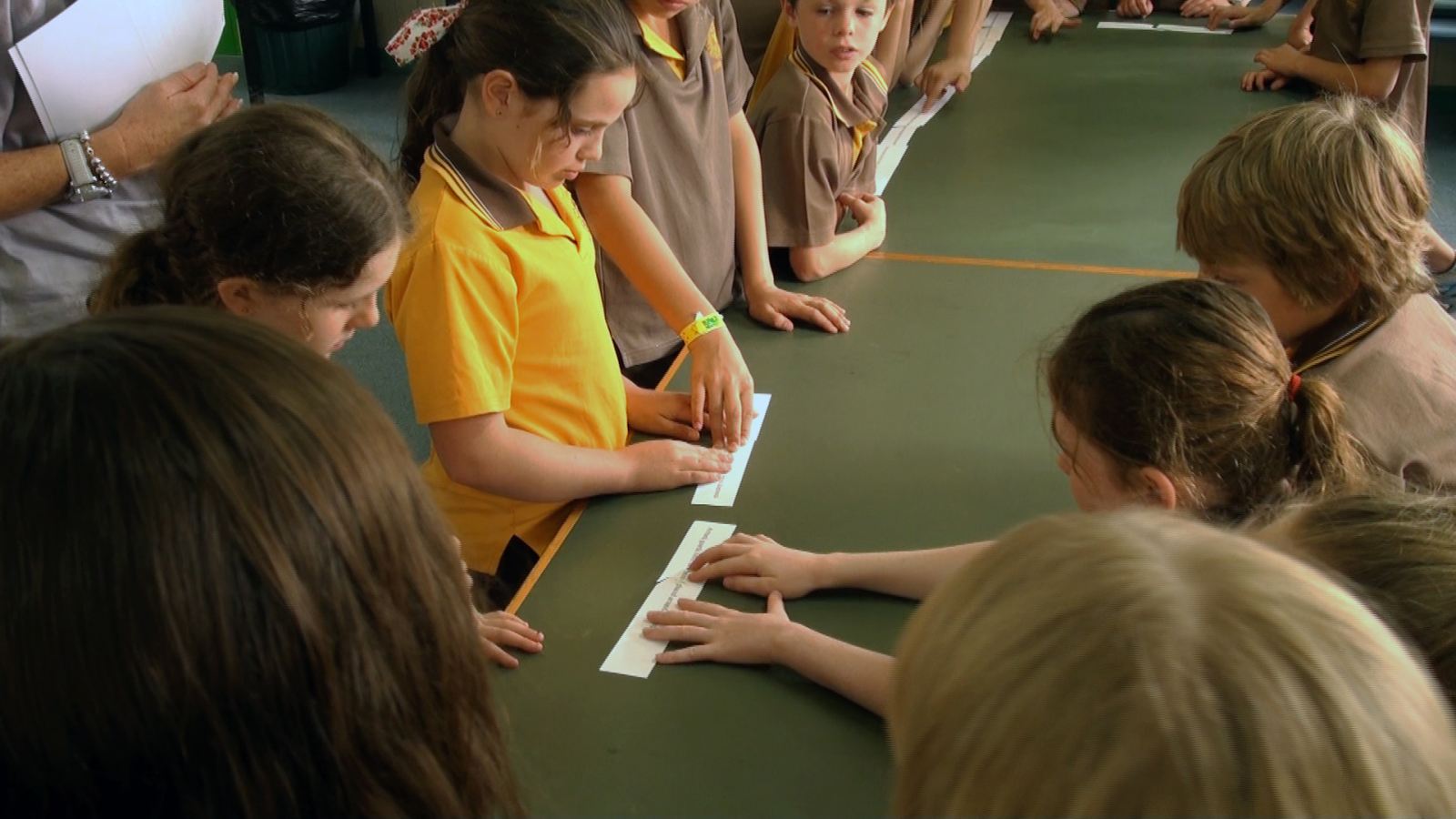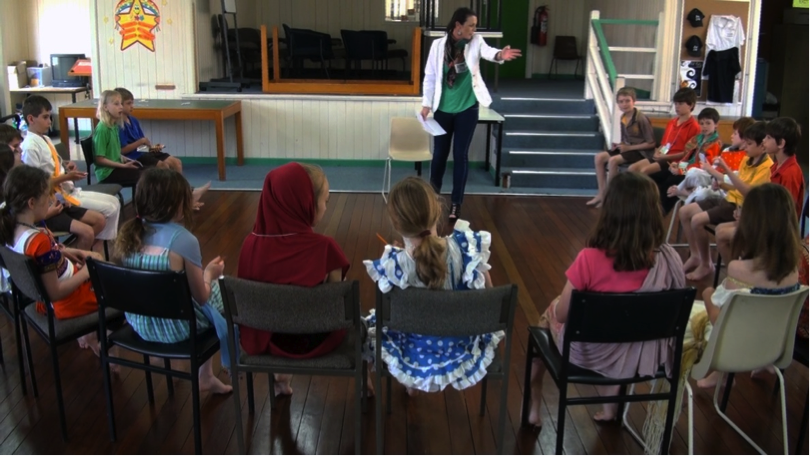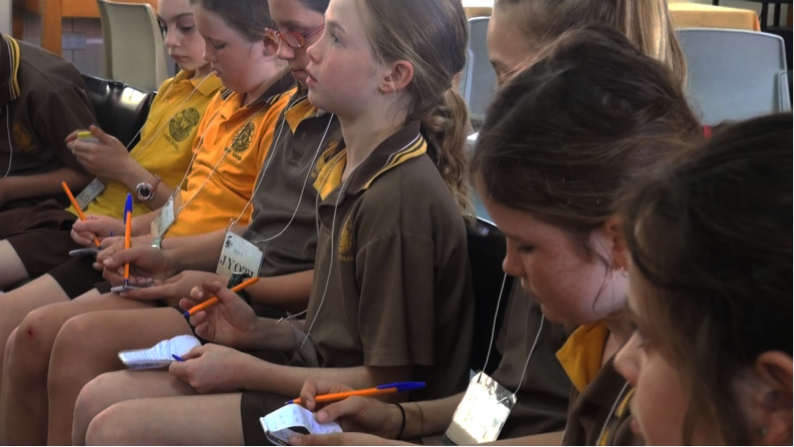
Drama
Implementation
For the full story and details of this unit, see support documents: Full planning schema and Teacher prompt notes.
Teaching drama does demand a little specialised classroom practice. Further detailed tips on teaching drama that applied in this The Treasure of Trivandrum drama are mentioned below (see also support documents Drama tips for teachers and Teacher-in-role guide).
Preliminaries
The students were not familiar with drama and needed to be taught some basic rules for drama readiness. Even for students familiar with drama, it may be useful to focus their attention or change their energy level with a themed warm-up game or activity. In this drama, after a brief introduction at the 
Talk chair, the teacher went straight into a 
Treasure hunt, a game activity, but one that also provided the clues to the drama topic and content.
Class management
This unit maximises the opportunities for student activity, including language use and movement. The unit depends on clear and effective instruction when setting up tasks, and the teacher’s readiness not to intervene too much by leading all of the talk and discussion. The unit is task-based with high engagement, so once the rules have been established and agreed upon and appropriate dramatic tension built in, there is little off-task behaviour.
Time management
Time in drama starts very slowly, and then flies when the children are engaged. The teacher ensures at each stage and change of activity that the students are given adequate time for setting the scene and building belief.
Space management
Because the students are not seated in an orthodox fashion, and the groupings change frequently, the space set-up is crucial because the students will be imagining the places of their drama. The spaces will need to seem real.
Role management
The students need time to build belief. The teacher 
Teacher models role clearly when the students – and she herself – will be moving in and out of role, using 
Minimal props – badge, notebook, pencil: identity badges and journalists' notebooks, and later a scarf for herself. The students spontaneously added costume to heighten the drama.
Making and presenting
In this drama, the students are working in two of the dimensions of drama learning:
Responding
Reflection on the drama is a vital part of the learning. The students reflect on their learning both inside the drama, and afterwards in the talk chair.